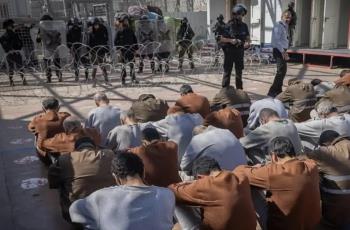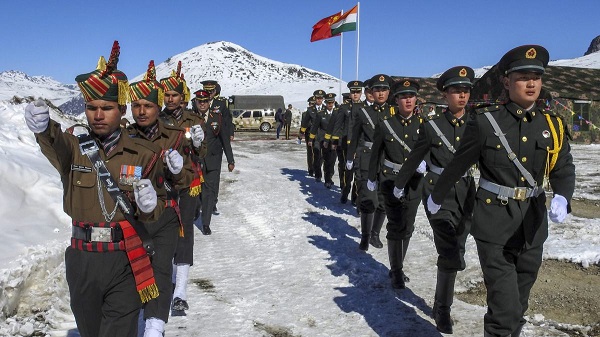Alwaght- Amid Chinese differences with the coastal countries of the East and the South China Sea, Beijing is having a territorial dispute with another one of its neighbors. Now China has taken its territorial claims to the far regions in Himalayas.
The border disputes between the two populous countries of China and India have increased dramatically over the past few weeks, with the media reporting border clashes led to injuries to the two sides’ troops and the Chinese army capturing for several hours a number of the Indian army troops.
During the clashes of May 9, four troops from India and Seven troops from China were wounded as the border forces exchanged fire. Earlier this week, the Indian army sent several brigades to the Ladakh border region, adding to the sensitivity of the already-developing situation. The developments promote questions about the reasons behind the fresh border dispute.
What is the root of the dispute?
China and India share 4,056 square kilometers of border. From the Indian side, the border regions include Ladakh and the four states of Uttarakhand, Himachal Pradesh, Sikkim, and Arunachal Pradesh. From the Chinese side, the border passes through the autonomous region of Tibet. According to some estimations, the border is longest disputed one in the world witnessing constant tensions since the 1962 short but deadly war.
The tensions continued until 1993, the year the two countries signed the Line of Actual Control (LAC) agreement. LAC includes also an agreement that was signed in 1996. The treaty of 1996 says that neither should violate the “Line of Actual Control.”
The continuous cycle of crisis and agreement
After several border clashes, the two countries finally signed an agreement for border cooperation in 2013, to make sure that the border patrols along the LAC will not lead to clashes. The tensions were mainly over the accurate location of the LAC, especially along the Pangong Tso lake. The Indian government says it recorded 273 border violations in 2016, 426 in 2017, and 326 in 2018.
Although the violations decreased in 2018, they increased by 50 percent in 2019, some reports say.
On the other side, although China does not publish documents on the Indian border violations, it constantly warns about New Delhi moves along the shared border. For example, in 2013 China protested against India's construction of a border post close to the line in Depsang Valley north of Ladakh. 21-day clashes ensued. Next year, when China tried to block Indian construction of an irrigation channel near the LAC, 16-day tensions followed in southern Ladakh close to the Chumar region. Before they could spiral into a serious crisis, the border tensions relaxed when in September 2014 President Xi Jinping of China visited India.
The biggest crisis between the neighbors took place in summer of 2017 in the Doklam region. In June of that year, the crisis intensified after China constructed a border road and entry of the Indian troops into the Chinese territory.
In that year, the Indian forces intervened to stop a Chinese construction company that was building a road leading to a disputed region in Bhutan kingdom that could give the Chinese a vantage point over a strategic but vulnerable region of India. The tensions lasted for 73 days, marking the longest standoff between the two countries in recent years. A meeting between President Xi and Prime Minister Narendra Modi of India brought the crisis to an end.
In 2019, various reports emerged to inform of confrontations near Pangong Tso lake. The lake is crossed by the LAC. China controls two-thirds of its east and India controls one-thirds of its west. Other occurrences took place in less strategic regions.
The LAC mystery and contentious factors
So far, China and India have taken many trust-building steps to manage the borders and prevent clashes. For the first time, they in 2019 unveiled a “coordinated patrol plan” in the relatively peaceful part of the LAC east of Arunachal Pradesh. The general framework, aimed at preventing deadly clashes and casualties along the LAC, is planned for the next few weeks.
Recently, the Indian army chief said that the root of the escalated tensions was the offhand decisions of the forces guarding the shared borders, adding that the tensions and clashes are an outcome of “offensive behavioral” of the two sides and signaling that the two governments do not support eruption of confrontation.
However, if these small tensions lead to big casualties from the two sides, then there is a risk of complicated crisis. The May 5 incident near the Pangong Tso lake was at least the third reported physical confrontation in those areas in four years.
Now the question is that why are the border clashes increasing despite the two sides’ lack of willingness to see any confrontation?
There is no clear response to this question but there are factors that can influence a tense atmosphere. One factor is the surge in infrastructural construction activities on both sides of the border. In 2019, the Chinese army built refuge and underground facilities in the region. Last month, India completed a bridge close to a sensitive border area in Arunachal Pradesh, facilitating faster movement of forces and artillery. Moreover, India constructed and modernized over 60 strategic roads along the Pangong Tso lake. They are scheduled to be completed by 2022. While India tries to frustrate the benefits of Chinese military infrastructure in the region, the border frictions are increasing. Still, this does not fully explain why tensions in several border regions have erupted in a short time.
Sometimes, a stare exchanged between the Chinese and Indian patrols or exchange of some words fast develop into physical clashes. That is while before 2017, there were no reports of clashes sparked by such factors. But now such reports have increased. So far, all these incidents were defused by the local commanders and none of them took the involvement of the two capitals.
A third factor is the US role as an international actor. In 1962, the US involved in the war by backing India through providing it with weaponry. Even now India looks for the American support in the border tensions as the two countries over decades deepened their strategic cooperation. Washington still recognizes the Indian territorial claims, at least in the eastern part of the LAC where Arunachal Pradesh links to Tibet. This means that if the Chinese forces get involved in clashes with India across LAC in Arunachal Pradesh, this will be taken by the US as an attack against India by China not a border clash between the neighbors in a disputed region.
Perhaps the most important role played by the US in recent years in the Chinese-Indian border dispute is the provision of India with intelligence from along the border. Reports suggest that Washington supplied New Delhi with intelligence on the Chinese force deployment during the 2017 standoff. The Indian interest in intelligence sharing motivated a military intelligence agreement with the US in 2018 intending to enable Indian military intelligence capabilities.
Under the Communications Compatibly and Security Agreement (COMCASA), India will be given access to a host of US military technologies like advanced drones and communication platforms. For example, India’s US-sourced maritime patrol aircraft will be outfitted with technology that enables direct communication with the US military and the sharing of live satellite feeds. India could also have direct linkages to the US allies that use similar equipment.
The US looks to the enhanced cooperation with India as an instrument to make a balance between the two powers and confront the Chinese influence in the region. In return for these supports, Washington expects New Delhi to play an active role in such regions as the South China Sea, Taiwan, and the Indo-Pacific and even take more sensitive policies to the Chinese border activities in the LAC.



























